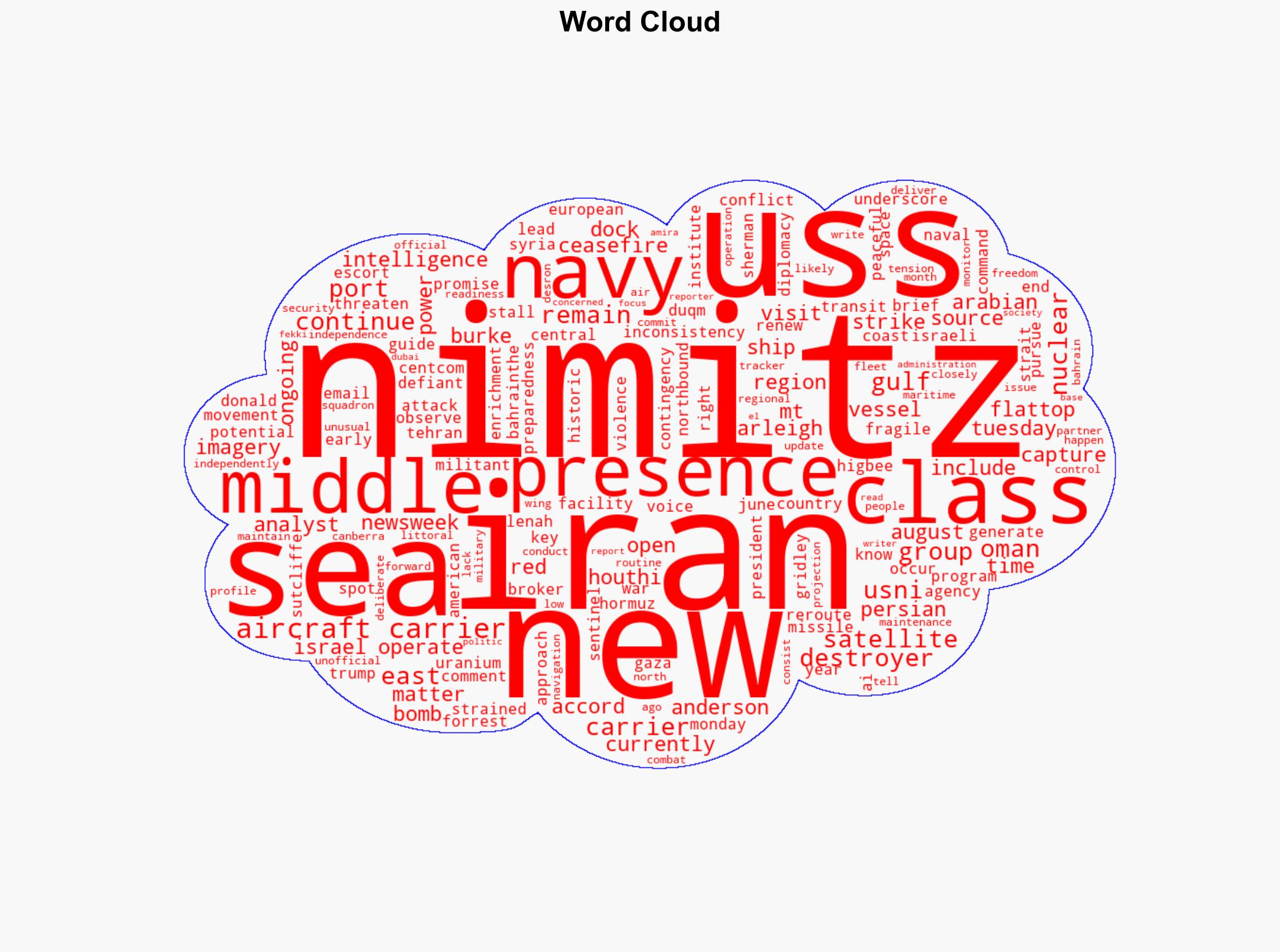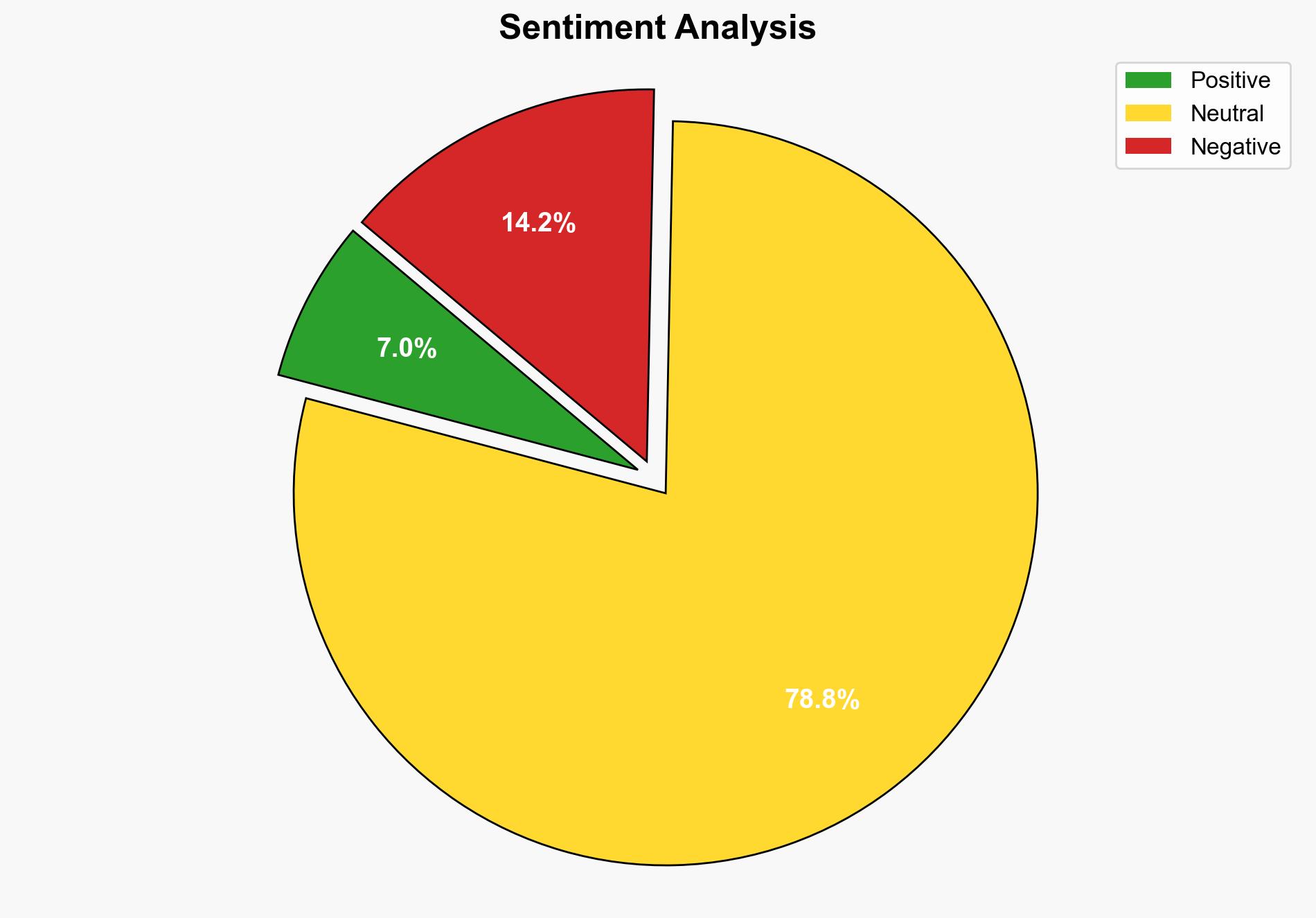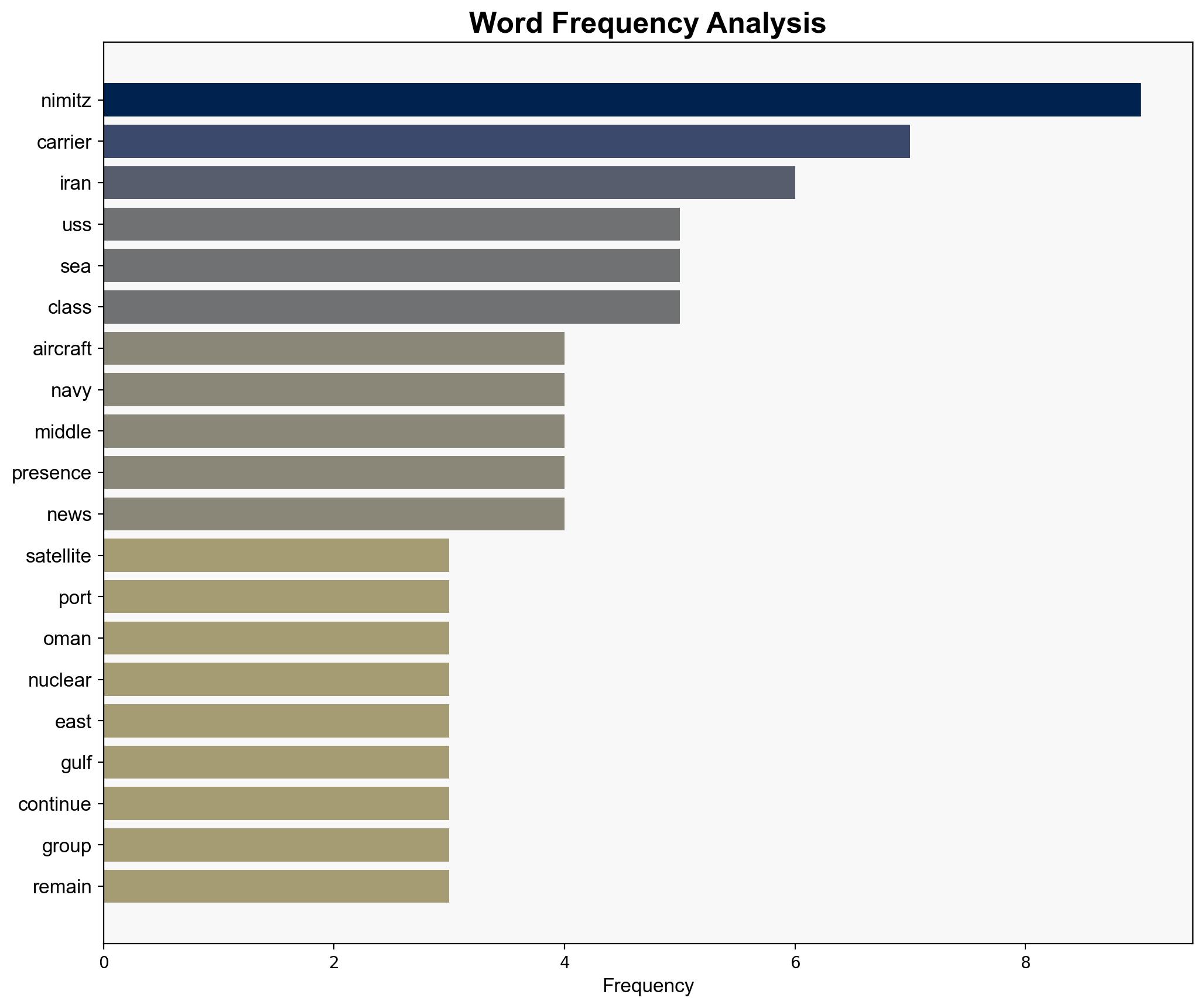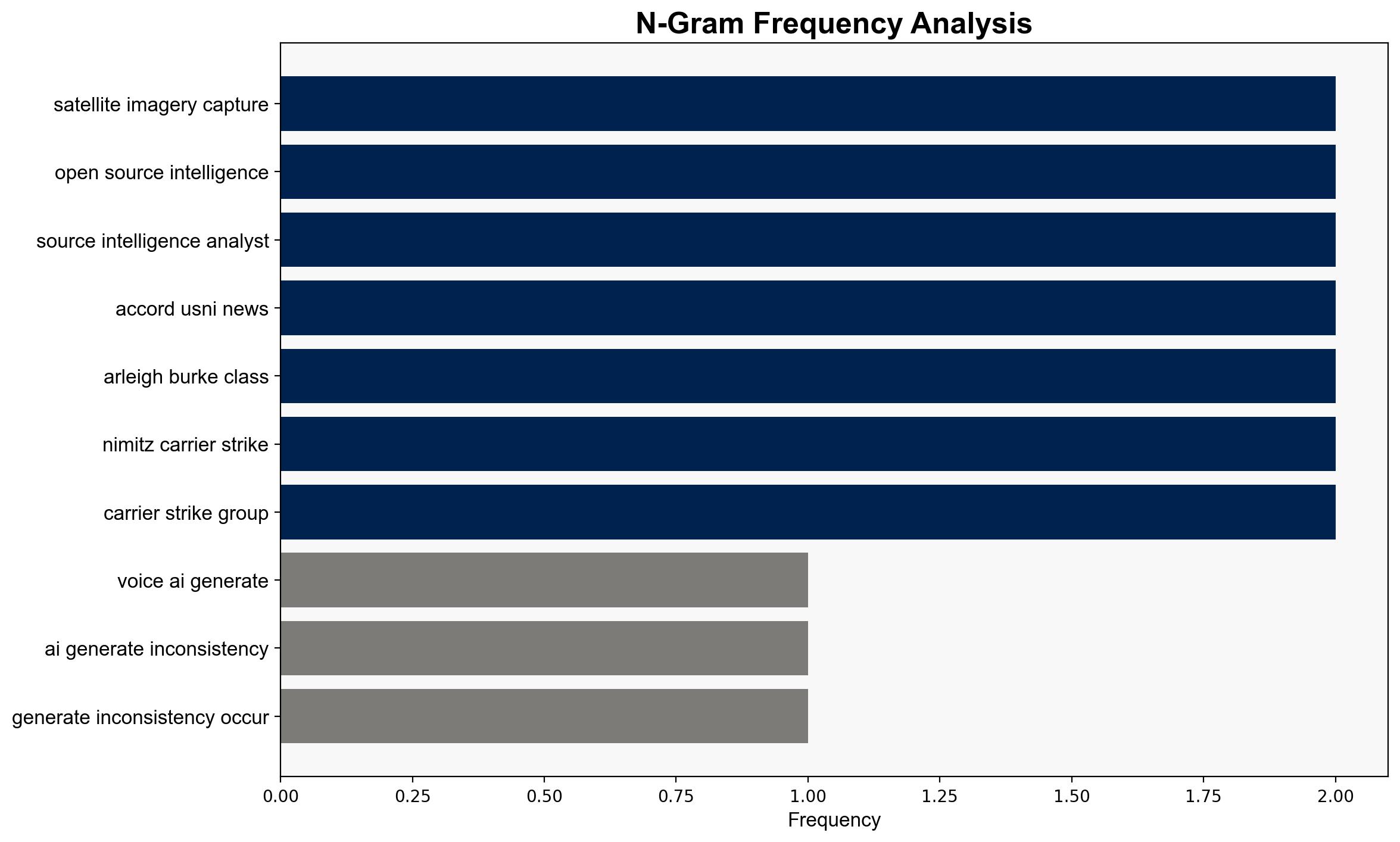Satellites Spot US Aircraft Carrier in Middle East – Newsweek
Published on: 2025-09-04
Intelligence Report: Satellites Spot US Aircraft Carrier in Middle East – Newsweek
1. BLUF (Bottom Line Up Front)
The presence of the USS Nimitz in the Middle East is likely a strategic move to maintain regional stability and deter potential Iranian aggression. The most supported hypothesis is that this deployment is a routine demonstration of U.S. military readiness rather than a precursor to imminent conflict. Confidence level: Moderate. Recommended action: Continue monitoring regional developments and maintain diplomatic channels to de-escalate tensions.
2. Competing Hypotheses
1. **Routine Deployment for Regional Stability**: The USS Nimitz’s presence is part of a scheduled rotation to ensure ongoing maritime security and freedom of navigation in a geopolitically sensitive area. This aligns with historical U.S. naval operations in the region.
2. **Preparation for Potential Conflict with Iran**: The deployment is a strategic positioning in anticipation of potential military action against Iran, particularly in light of recent threats and the fragile ceasefire involving Iran-backed groups.
Using the Analysis of Competing Hypotheses (ACH) 2.0, the first hypothesis is better supported by the evidence, including the lack of official announcements and the routine nature of naval operations mentioned in the report.
3. Key Assumptions and Red Flags
– **Assumptions**: The U.S. Navy’s operations are primarily defensive and routine. Iran’s actions will remain within the scope of diplomatic engagement.
– **Red Flags**: The unusual lack of official communication could indicate a deliberate effort to maintain operational secrecy. The presence of multiple U.S. naval vessels in the region could also suggest heightened readiness for conflict.
– **Blind Spots**: Potential undisclosed diplomatic negotiations or intelligence assessments that could alter the strategic landscape.
4. Implications and Strategic Risks
– **Geopolitical**: Increased U.S. military presence may escalate tensions with Iran, potentially leading to miscalculations or unintended confrontations.
– **Economic**: Disruptions in the Strait of Hormuz could impact global oil markets.
– **Cyber**: Heightened risk of cyber operations targeting U.S. naval assets or regional infrastructure.
– **Psychological**: Regional actors may perceive U.S. actions as aggressive, influencing their strategic calculations.
5. Recommendations and Outlook
- Enhance intelligence-sharing with regional allies to improve situational awareness.
- Maintain open communication channels with Iran to reduce the risk of misinterpretation.
- Scenario Projections:
- Best: Diplomatic engagement leads to de-escalation and regional stability.
- Worst: Misinterpretation of military movements results in direct conflict.
- Most Likely: Continued U.S. presence deters aggression without escalation.
6. Key Individuals and Entities
– Amira El Fekki (Newsweek reporter)
– MT Anderson (Open source intelligence analyst)
7. Thematic Tags
national security threats, regional stability, military readiness, Middle East tensions




